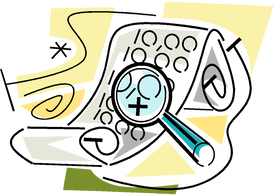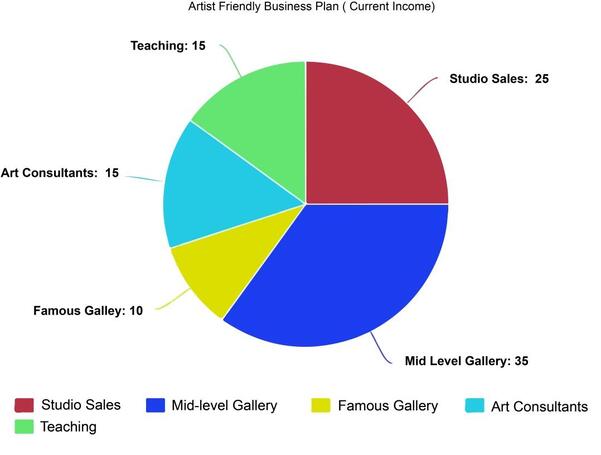|
In my last post we saw that artists often face a dilemma. Your creative process is one way of perceiving the world, while managing a career requires a whole different set of skills. When you are making art and then trying to promote it, you go back and forth, again and again, using opposite parts of your brain. No wonder you get exhausted and discouraged! So what can you do? You can use your strengths as an artist to transform “left brain” career skills into artist-friendly tools and techniques. Here’s an example of how this works. An abstract painter was trying to grow her business. As a mid-career artist she had already been successful in finding gallery representation, and was also using a number of other strategies to sell her work. Her bookkeeper kept track of her sales, providing monthly reports on Excel spreadsheets. This information, so vitally important to her business, was presented in a detailed, logical, sequential, linear format. When she looked at the documents they didn’t mean anything to her, so she kept forgetting them. When this data was transformed into an artist-friendly format, the artist suddenly realized what those excel spreadsheets were trying to tell her. She immediately understood how to grow her business. “The famous gallery isn’t really doing much for me! I’ll talk to Joyce (gallery director) to see what’s happening there. Maybe another mid-level gallery would be better for me.” Later on she noticed: “My studio sales are a larger part of my business than I thought! I’ll schedule more regular events in the studio.” Her pie chart was a visual shorthand that communicated directly to her artist brain. In another example, an emerging artist went to a workshop and developed a business plan for her art career. She spent a lot of time and energy on the plan, and was very excited about it. She then kept it hidden away in a file on her computer. Months later she was surprised and disappointed that nothing was happening, and blamed herself for being lazy. The artist’s good ideas disappeared because they were no longer real to her. She needed to figure out how to translate her plan into an artist-friendly format so that she could see it, touch it, and feel it. She constructed a topographical map out of papier-mâché, showing the sequence of steps she wanted to take. She included a small maquette of an urban gallery space, since that was one of her goals, plus a tiny version of her art placed in a sculpture garden. By creating a version of her plan that she could see and touch and feel, the artist brought her business plan back to life. She then was able to make it happen.
If these suggestions seem a little odd, remember that you are simply replicating what you do as an artist, as a maker. When you make art you give form to an idea or a feeling. You capture an impression in clay or on canvas, or in a photograph. You can use this same ability to learn the career skills that will help grow your practice. Mary Mary Edwards, Ph.D Career & Life Coach for Artists “Left Brain Skills for Right Brained People” Instagram: coachingforartists.maryedwards Comments are closed.
|
Mary's BlogAs an artist coach, I bring a unique combination of business knowledge, art world experience, and professional coaching skill to my practice. |




